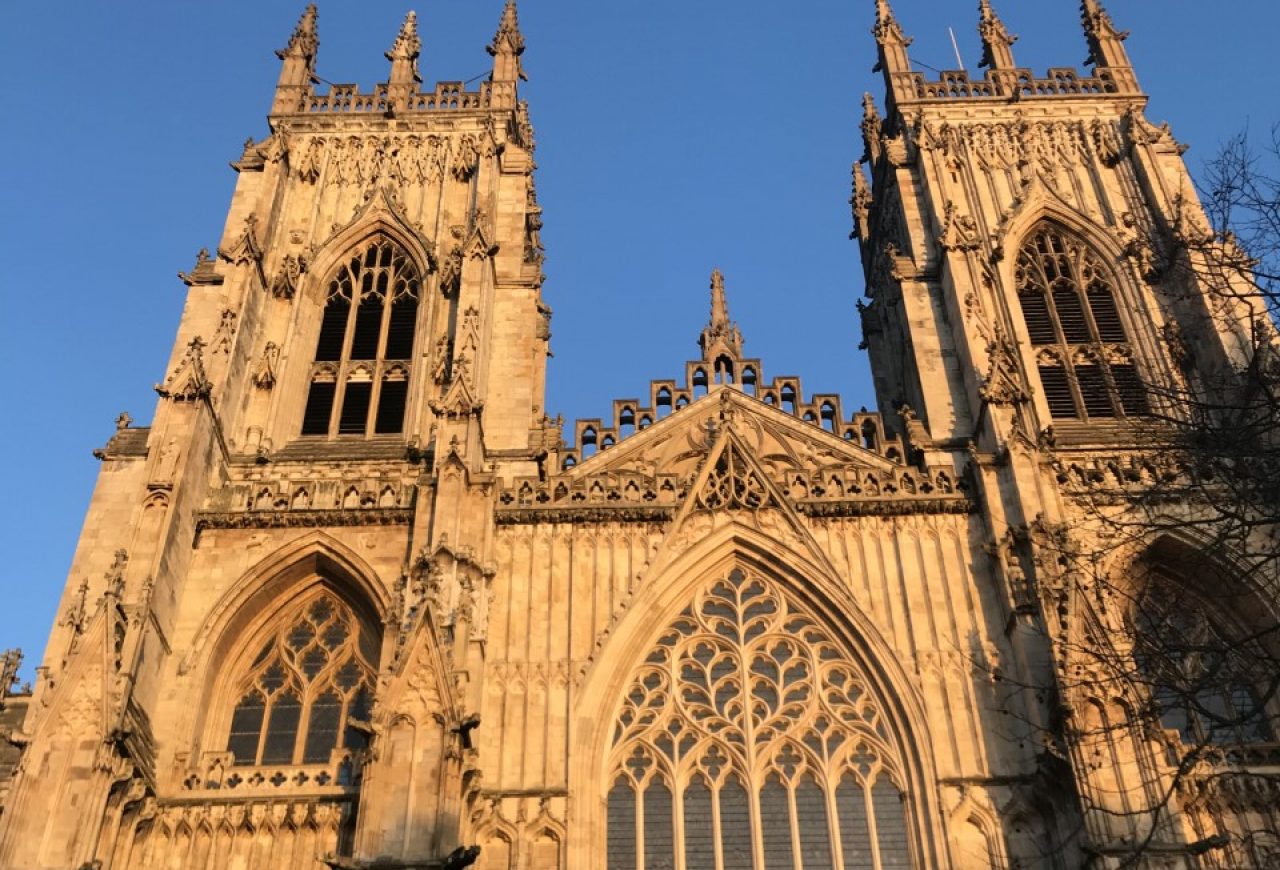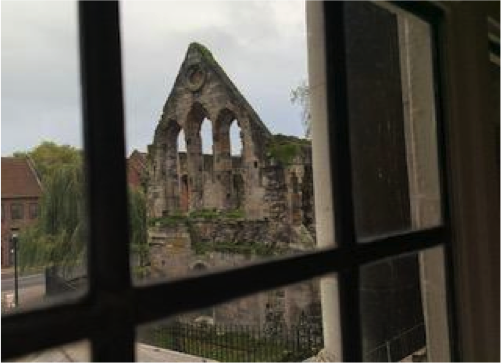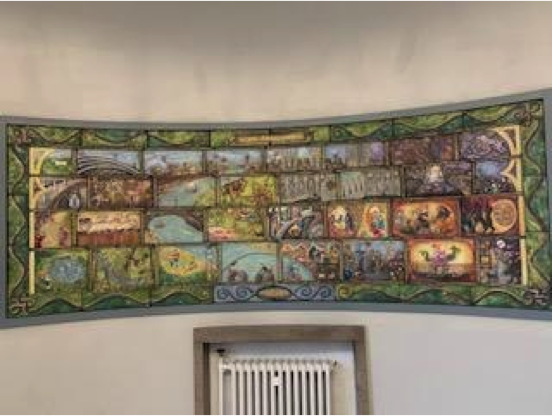York is known for being an historic city and, for those studying the past, the historic environment can be truly inspiring. Second year student Leah Marshall shows just how captivating those surroundings can be, describing here the history all around her while on placement at York Explore.
Recently I had the privilege to partake in a volunteering experience at the city archive, where I had the chance to work in an amazing historical building – York Explore Library – and surround myself with beautiful and iconic historical features of the city of York.
The structure was built in 1927 and is in the heart of York, surrounded by numerous historical sites of the city. The library was dedicated on 23 September, 1927, by the Right Hon the Earl of Elgin and Kincardine C.M.G, Chairman of the Carnegie United Kingdom Trust, which contributed £13,200 to the building’s construction. Prior to the construction the library had been housed in what is now known as the York Dungeon on Clifford Street.
The building is surrounded by the very popular Museum Gardens and overlooks the ruins of St Leonard’s Hospital. These remains are amongst York’s oldest architectural ruins, with it being almost 500 years since the Reformation, which saw the hospital destroyed. The ruins of St Leonard’s initially resemble the remnants of an old church, and to some extent, this is accurate. The St Leonard’s hospital was formerly King Athelstan’s St Peter’s Hospital, but it was destroyed in a fire in 1069. King Stephen then reconstructed it in stone and some of these remnants can be found on the library grounds. During excavations, numerous Roman and medieval artefacts and items were discovered, including a Roman oven.
The historical beauty that surrounds the building immerses you into the history of York, making you want to explore it in the detail that the archives can provide. It certainly made me want to study more about York! Volunteering at the archive has allowed me to understand and appreciate some of the amazing historical features of this beautiful city. It has given me the opportunity to be able to research and analyse some of the work that has been produced over time to make the city of York the popular tourist destination it is today.
The building is also on the site of the Multangular Tower. York’s history may be traced back to at least AD 71, when the Roman 9th legion arrived at the strategic meeting point of the rivers Ouse and Foss and erected a fort to defend themselves against hostile inhabitants. The Multangular Tower, which can be seen from the windows of the library, was an important feature of the fortress defence. So, if you come to visit this outstanding historical landmark, make sure to have a look within the archives and research this amazing feature.
Inside the building, as you can see in the photograph above, there is a beautifully depicted story of some crucial historical events that took place in York, named York Panorama. I found this artwork fascinating, especially when looking at the detail it goes into and the magnificent yet emotional story it takes you on when looking at the history of York. This is just one out of many amazing things this building has to offer.















